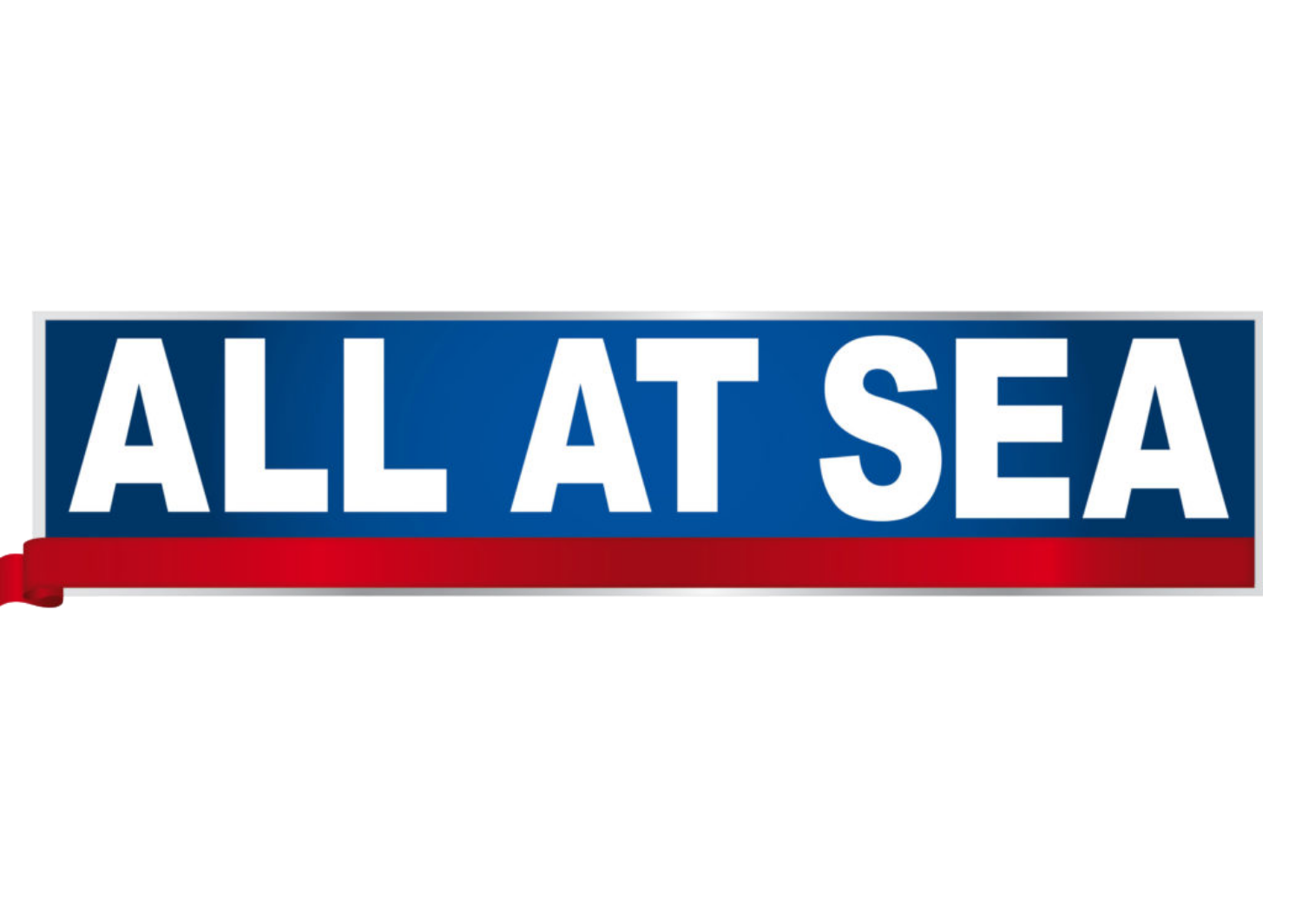Various dates available
Ski & Sail Svalbard – 9 days
From £4485 per person
Deposit 25%. Balance due 12 weeks before departure.
Experience the best of Svalbard skiing and sailing in May, when the sun shines 24/7 and the animal are thriving.
8 Nights: Various dates available May & June 2024
Price: 58,750 NOK / £4,485 per person*
*Trips are priced in the operator’s local currency. The sterling amount shown is a guide only and the amount you pay in sterling will change with currency fluctuations.
Ski pristine mountains and sail through stunning fjords in the land of the midnight sun. Enjoy the company of wild animals, including polar bears, whales, and birds. Hike up and ski down mountainsides that few others have skied before you. Return to the boat to relax with warm and good food before sailing to the next fjord, harbour, or anchorage. Our 70-foot expedition boat Valiente is perfect for navigating the Arctic wilderness, and our experienced skipper and ski guides will ensure you have a safe and unforgettable adventure. The crew also follows AECO's guidelines for encounters with wildlife, beach cleaning, cultural heritage sites, and for visitors and tourist operators in the Arctic.
Day 1: Ship o’hoi – let’s meet and set sails!
Welcome on board! We will meet in Longyearbyen harbour at 14:00, get settled in to the boat and get to know each other. Before we set sails, we’ll take you through safety routines on board, and familiarize you with the boat. We eat dinner on our way out of the fjord and sail to our first anchorage ready for skiing tomorrow.
Day 2: Skitouring in outer Isfjorden
The most famous and visited fjord in Svalbard is Isfjorden. In their respective side fjords in this fjord system, lies the cities of Longyearbyen and Barentsburg, as well Pyramiden and other smaller abandoned places. The fjord is surrounded by great mountains for skiing, so before we sail north, we spend a day or two skiing around Isfjorden.
Day 3: St. Jonsfjorden and Forlandsundet
Just north of Isfjorden, we enter Forlandsundet. Here there are mountains on both sides of the strait and we have a lot to choose from. If there is more weather and wind, we can hide in St. Jonsfjorden and find some big, nice mounitan sides to ski here. If the weather is calm and the sea is flat, we may even be able to get ashore at Prins Karls Forland, a special place in itself.
Day 4: Kongsfjorden and Ny-Ålesund
Further north on the northwest coast we come up to Ny-Ålesund, this small research town at 79 degrees north. Kongsfjorden is the name of the fjord system around this small settlement with very good skiing terrain and large glaciers calving into the fjord.
Day 5-6: Northwest corner and Smeerenburgfjorden
It was the landscape and mountains around the Northwest corner and Smeerenburgfjorden that first gave Spitsbergen its name. When dutch Willem Barents was the first European to discover the archipelago. This explains why the archipelago first got its name Spitsbergen (land of the pointy peaks), as we here in the Northwest find some of the most alpine landscape in all Svalbard. We are spending a couple of days in the far north and are hoping for stable snow and calm weather!
Day 7: Magdalenafjorden or Krossfjorden
We eventually have to turn south again towards Longyearbyen, but we spend a day skiing on our way south. Preferably in one of the fjords on the north-west coast, which we didn’t have time to visit on the way north. After another full day of skiing, there will be après-ski on the aft deck with swimming between ice floes if the sun is shining.
Day 8: Sailing day south
After a few hopefully great skiing days up the north-west coast, we hoist sail and set our course south again. If the weather is better, we will take this sailing day further north at the start of the week. And rather work our way south more slowly. The best thing about being on an expedition is that the weather decides and we can adapt to make the most out of it!
Day 9: Last day of skiing and home!
We wake up at anchor somewhere in Isfjorden again on the last morning. Here we do some hours skiing in the morning before we cover the last sea miles to Longyearbyen. On the way to the dock, we pack, clean and wash ourselves off the boat, so we are ready for the end of the trip no later than 16:00. Thank you for a fantastic Ski & Sail expedition!
Changes to the program
The program is an indication of what the days will look like. Though it might change according to weather and snow conditions. We start each day with a good breakfast and pack lunch before we go out ski touring. Some days we eat dinner straight after skiing. Other days we just eat a little when we get down to the boat again, and sail further before we cook a later dinner. Some days we put in time to fish, or time to look around. Especially on this trip, we have light around the clock and can use weather windows both early morning and late evening to do nice skiing trips in the mountains!
In Longyearbyen
If you have the opportunity, we recommend spending an extra evening in Longyearbyen to familiarize yourself with this small hub of a city with people from all over the world. And if we manage to do so, we will try to arrange a joint meal on land on the last day.
- Trip experience with a sailboat – experienced and locally familiar skipper on board
- Guided trips every day – experienced and locally familiar ski guide
- Small groups – maximum 6 guests per ski guide
- Our Comfort Package consists of accommodation onboard in a shared double cabin (bunk or double bed) with a ready-made bed (warm and nice duvets and pillows!)
- All the food we eat on board during the trip
- An environmentally friendly, local, sustainable, unique, exotic, and exclusive Norwegian adventure holiday
- A shared experience and friendship with like-minded adventurers from around the world
- A lot of time outdoors – raw and honest nature experiences
- Survival Suit and Search and Rescue insurance for everyone on board
- Use of our shared trip equipment: dinghy, kayaks, fishing equipment, etc.
- All boat-related expenses such as diesel, gas, harbor fees, etc.
- Personal safety equipment, Helly Hansen inflatable lifejacket
- Travel to and from the start/end location
- Optional meals at cafés/restaurants
- Ski and avalanche equipment (beacon, shovel, probe)
- Personal snacks for excursions on land (it’s smart to bring a little extra snack)
- Drinks like wine, beer, or high-exclusive apple juice and other luxury drinks (yes, we drink beer and wine on board, bring your own)
- Entrance to galleries, museums, and similar, or other activities that you/we may come up with along the way
- Travel/cancellation insurance – optional, but recommended
Travel – in general
Sometimes we have to fly, but not always. If you have the luxury of time, we always encourage you to travel as environmentally friendly as possible. Traveling slowly also gives another start to a holiday. Cycling, taking the train, or driving a car together are good alternatives! Feel free to add some extra time before and after, since up in the north weather can sometimes change your plans.
Travel
Very few row to Svalbard, a few more sail, but most fly. Norwegian and SAS fly to Longyearbyen, check out www.norwegian.no or www.sas.no.
What exactly is Ski & Sail?
Ski & Sail is a trip concept where we sail into the foothills of the mountains and start the ski trip by the edge of the water. By boat, we can move from place to place, and choose mountain sides and areas based on weather and conditions. Ski & Sail is something Italian and French skiers have done in Norway since the 90s, and something Norwegians so far have only started to discover the joys of. We have arranged Ski & Sail trips on Helgeland, in Steigen, in the Lofoten Islands, in Lyngen, Finnmark, and Svalbard for many years, and we dare say that we know many of the very best places along the coast. Skiing & Sailing is really cool!
Level of this trip – medium level
On this trip, we require some experience with randonee/alpine touring/backcountry skiing. If you have a lot of experience it is great, and you will get to work on your skills and techniques. Those with a lot of experience often ski steeper slopes than the others and may take on several runs during one day. But we try to keep the level as even as possible, so we can choose the destination from the participants’ level. If you are in doubt as to whether this is the trip for you, please feel free to contact us, and we can look at the level of the other participants and find a trip that suits you perfectly – whether you are a beginner or experienced.
Safety and risk – in general
Sailing-wise, our trips are not difficult, and you are always welcome to join us! We have with us both people who have never sailed before and experienced sailors. However, you must be prepared for everything from no wind to sailing in harsh weather. If you are a beginner, we will try to make you a seaman/woman as soon as possible. If you are experienced you will be given responsibility and greater challenges. We take safety seriously and on our trips, we train on handling different situations that can occur at sea. Man-over-board, fire, abandon vessel, dismasting, and grounding are some of these. Building the participants’ skills on how to handle critical situations are important elements for better safety on board. On board a boat and on trips, everyone must know what to do in potentially dangerous situations. For us, it is important that you as a guest and participant trained quickly enough to be a participant, not a passenger. It contributes to learning, a sense of achievement, and increased safety for all. It’s also why our trips are considered to be sailing courses, you are trained to be one of the crew members on board.
We have the same mindset when it comes to skiing and alpine/backcountry trips. On the first day of skiing, we train and repeat search and rescue techniques, and the use of avalanche equipment. Many elements determine the safety of an alpine/backcountry trip. Good planning, humbleness in relation to weather and avalanche risk, and a dynamic group are important.
Mountain hikes and alpine/backcountry trips involve a certain risk, as does sailing. However, we as an operator, and our skippers and ski guides, do everything we can to minimize the risk in a professional manner. Everyone gains from this and we have no one to lose. Feel free to contact us to discuss risk.
Snow conditions
If we are in a place without snow, we sail to where the snow is! With the sailboat, we are flexible with regards to finding the best snow, but that means we may go somewhere that is not mentioned in the program or a place that we have not tested in advance. Then it’s extra exciting.
Equipment/packing
Ordinary alpine/backcountry equipment is required for this trip, which means an avalanche-/ski backpack with beacon, probe, and shovel, and alpine/backcountry skis with skins and ski crampons. We have a few backpacks/sets that can be hired through us and ski equipment can be rented through our partners. In good time before departure, we will send you a detailed recommended packing list for this trip.
Food and cooking
On our trips, everyone contributes to the operation of the boat, so as long as you have not booked one of our trips with a designated chef, all take their turns in the galley during the trip. Skippers and guides assist as much as they can along the way. In advance of the trip, we set up a menu and shop for what is needed. We offer good menus with healthy and medium-advanced food. If you have allergies or preferences let us know in the registration form, and we take that into account.
What we expect from you
We want you to take part in the routines onboard the sailboat, whether it is sailing, docking, navigating, looking for whales and icebergs, washing up, cooking, cleaning the boat, or contributing in other ways when required. Our trips require a little work from the participants – and you must be open to contributing and open up a bit socially. We have many different people with us on our trips, and most people go very well together. Our experience is that doing things with others out in nature, and not least doing things with new people with different personalities than one might be used to, is what creates the best, most interesting, and memorable stories :)
Life on board and accommodation
Life on board a sailboat is social and pleasant, but for some, it can be perceived as quite intimate and crowded, which is important to be prepared for. On our trips, everyone participates in the operation of the sailboat and everyone is considered a crew. We would like to get to know you well and hope that you will get to know everyone else on the sailboat as soon as possible. It requires some patience, generosity, and an open mind to thrive, but the new acquaintances and completely raw nature experiences are quickly what will take your focus as soon as you become comfortable with life at sea.
Accommodation on the boat is part of the fun. The accommodation is generally in shared cabins, some of which have a double bed and some have a bunk bed solution. The distribution is quite a puzzle, but we do believe we are quite good at it. Let us know if you have any special needs or reservations. Any accommodation before and after the trip must be arranged on its own. If you have any doubts about where to stay, we’re happy to give you some recommendations.
On the boat, we have a lot of heat and a lot of good food, but not always an abundance of fresh water.
What kind of people join this trip?
Many come alone, some travel as couples, and some travel as a group of friends. The common denominator for everyone is that these are fun and committed people you become friends with almost no matter what. Sharing grand experiences creates strong ties! Many people wonder about the age composition of our trips, but that is not so important to us. It doesn’t matter if you are young or old as long as you want to go on a trip and intend to do your part so that you and the rest of the crew will have a good trip together.
Environment and sustainability
Both sailing and alpine/backcountry trips are environmentally friendly activities and we sail as much as we can and use the engine as little as possible. We encourage crew and participants to travel as environmentally friendly as possible, and we use local ingredients and resources as far as possible. We also have our own trips where we collect litter and clean ocean trash from beaches.
Philosophically we often say that sailing is an exercise in sustainability; we move with the wind and we have limitations on things like water, diesel, electricity, and food. In order to run sustainably – knowledge, patience, agility, and hard work are required. The same can be said about many other things that one tries to do in a sustainable way.
Changes to the program
The program should be seen as a starting point that we adapt to weather and conditions. We also reserve the right to constantly improve our itineraries. Onboard with us we always have a dinghy for beach landings and small expeditions, we have fishing gear for the cod, and gear to hike or make a bonfire on the beach – we are ready for adventure! Are you?
Travel – in general Sometimes we have to fly, but not always. If you have the luxury of time, we always encourage you to travel as environmentally friendly as possible. Traveling slowly also gives another start to a holiday. Cycling, taking the train, or driving a car together are good alternatives! Feel free to add some extra time before and after, since up in the north weather can sometimes change your plans. Travel Very few row to Svalbard, a few more sail, but most fly. Norwegian and SAS fly to Longyearbyen, check out www.norwegian.no or www.sas.no.
Take an external flight from Longyearbyen.
Day 1: Ship o’hoi – let’s meet and set sails!
Welcome on board! We will meet in Longyearbyen harbour at 14:00, get settled in to the boat and get to know each other. Before we set sails, we’ll take you through safety routines on board, and familiarize you with the boat. We eat dinner on our way out of the fjord and sail to our first anchorage ready for skiing tomorrow.
Day 2: Skitouring in outer Isfjorden
The most famous and visited fjord in Svalbard is Isfjorden. In their respective side fjords in this fjord system, lies the cities of Longyearbyen and Barentsburg, as well Pyramiden and other smaller abandoned places. The fjord is surrounded by great mountains for skiing, so before we sail north, we spend a day or two skiing around Isfjorden.
Day 3: St. Jonsfjorden and Forlandsundet
Just north of Isfjorden, we enter Forlandsundet. Here there are mountains on both sides of the strait and we have a lot to choose from. If there is more weather and wind, we can hide in St. Jonsfjorden and find some big, nice mounitan sides to ski here. If the weather is calm and the sea is flat, we may even be able to get ashore at Prins Karls Forland, a special place in itself.
Day 4: Kongsfjorden and Ny-Ålesund
Further north on the northwest coast we come up to Ny-Ålesund, this small research town at 79 degrees north. Kongsfjorden is the name of the fjord system around this small settlement with very good skiing terrain and large glaciers calving into the fjord.
Day 5-6: Northwest corner and Smeerenburgfjorden
It was the landscape and mountains around the Northwest corner and Smeerenburgfjorden that first gave Spitsbergen its name. When dutch Willem Barents was the first European to discover the archipelago. This explains why the archipelago first got its name Spitsbergen (land of the pointy peaks), as we here in the Northwest find some of the most alpine landscape in all Svalbard. We are spending a couple of days in the far north and are hoping for stable snow and calm weather!
Day 7: Magdalenafjorden or Krossfjorden
We eventually have to turn south again towards Longyearbyen, but we spend a day skiing on our way south. Preferably in one of the fjords on the north-west coast, which we didn’t have time to visit on the way north. After another full day of skiing, there will be après-ski on the aft deck with swimming between ice floes if the sun is shining.
Day 8: Sailing day south
After a few hopefully great skiing days up the north-west coast, we hoist sail and set our course south again. If the weather is better, we will take this sailing day further north at the start of the week. And rather work our way south more slowly. The best thing about being on an expedition is that the weather decides and we can adapt to make the most out of it!
Day 9: Last day of skiing and home!
We wake up at anchor somewhere in Isfjorden again on the last morning. Here we do some hours skiing in the morning before we cover the last sea miles to Longyearbyen. On the way to the dock, we pack, clean and wash ourselves off the boat, so we are ready for the end of the trip no later than 16:00. Thank you for a fantastic Ski & Sail expedition!
Changes to the program
The program is an indication of what the days will look like. Though it might change according to weather and snow conditions. We start each day with a good breakfast and pack lunch before we go out ski touring. Some days we eat dinner straight after skiing. Other days we just eat a little when we get down to the boat again, and sail further before we cook a later dinner. Some days we put in time to fish, or time to look around. Especially on this trip, we have light around the clock and can use weather windows both early morning and late evening to do nice skiing trips in the mountains!
In Longyearbyen
If you have the opportunity, we recommend spending an extra evening in Longyearbyen to familiarize yourself with this small hub of a city with people from all over the world. And if we manage to do so, we will try to arrange a joint meal on land on the last day.
Adventure-wear
- Woollen underwear – shirt and longjohns/ziplongs (bring two pairs so you have spare)
- Woollen socks (multiple pairs) and woollen soles (bring two pairs so you have spare)
- Woollen scarf/buff/high neck and hat (preferably warm and wind proof)
- Mittens or gloves preferably with wind or water-resistant covers.
- Woollen sweater, preferably a turtle-neck
- Warm pants, preferably multi-layered with warmer materials. (For use on deck or while sailing)
- Warm winter jacket – down jacket or preferably primaloft (as they can handle water)
- “Nice/party-/restaurant” clothing
- Sea/sailing/rain/rubberboots, preferably “winter” style. Bring some big enough so that they breathe even with woolen-socks and woolen-soles. Tip – check out light weight ice fishing/snow mobile boots…
- Light shoes/sandals/crocs that breathe well. (For use indoor and on deck in nice weather)
- Sailwear/oilskin – jacket and pants (we rent out/sell good quality oilskins at reasonable prices, see separate information)
- Sailing gloves (not a must) and here you can also use skiing-gloves or rubber/fishing gloves with wool liners.
- A head torch (preferably one with dimming-function/red (night) light) + extra batteries.
- Optional: Small seat-pad to put inside your pants, or the padded longjohns we’ve developed together with Northern Playground, https://www.northernplayground.no/en/shop/ziplongs-padded
Other equipment
- Sunglasses and sunscreen
- Water bottle(s), minimum 0,75 – 1 liter, Hydration reservoir (Camelbak)
- Small washing cloth and soap
- Towel and swimming gear
- Thermos (insulated bottle) for hot water.
- Drytech lunch/dinner for a day trip. (optional – instead of packed lunch)
Equipment for skiing
- Skis or splitboard with fitted climbing skins and ski crampons, boots and poles!
- Skis should be packed in ski-bag, boots in a boot-bag/bag for storage on board and easy&safe transportation to the shore in the dinghy.
- When we go in the dinghy in between the mother vessel and land, we use rubber boots in order not get wet. We then change to skiboots on the beach. So… you should bring watertight boots as high as possible. The absolute best are waders that fly-fishers use, however :)
- Avalanche safety kit: Shovel, probe and transceiver/beacon (with extra batteries) – Everyone going ski touring must have complete kit!
(We have a few kits for rent, can also be rented in Henningsvær/Tromsø) - Ski clothing
- Helmet and goggles
- (Skiing) Backpack, 30 – 50 liter capacity
- Ski-crampons, recommended.
- Splitboard-crampons, required. For icy/hard conditions.
- Boot ice crampons and ice axe (we normally do not plan any runs that requires this, so it’s optional, not a must)
- Map over the area
- Compass
Smartphones, charging and other advice
- Onboard the boats there are USB outlets for charging phones when we sail. 220V outlets are available when we’re docked.
- We have cellular coverage most of the time. (Mainland Norway)
- We have enough life vests for everyone, but if you have a vest of your own that you want to use, then bring it! (Unscrew the gas-cylinder before checking in your bag at the airport.)
- Pack like a sailor; in a bag or backpack, NOT in a rigid suitcase.
- Pack as little as possible, but bring what you need!:)
- The less items you bring, the faster we sail, and the less time you spend fooling around with your gear:)
- Please make sure that you have a valid travel insurance, preferably with a cancellation coverage
PS: This is a recommended packing list. Please take into account if there are other items you may need on board.

















